earlyproduct
startup
guide
discoveryworkshop
Build your MVP (Minimum Viable Product) the right way - step by step guide by mDevelopers
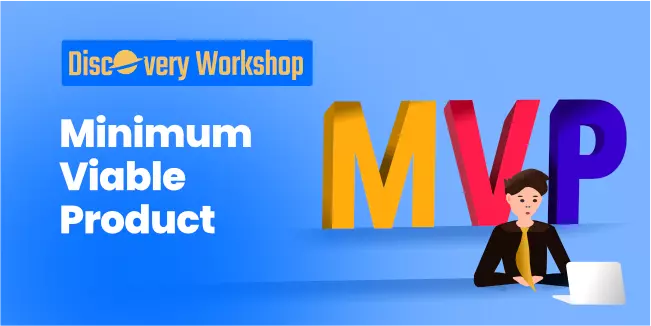
Building an MVP is a crucial stage of the software development life cycle that should never be forgotten.
Here at the best product development company, we have prepared a series of articles about Discovery Workshop to introduce you to the secrets of developing mobile applications. This Workshop strives to completely analyze your app idea, define precise development stages, and find solutions to create an excellent finished product within the budget and timeframe.
Creating an MVP is fundamental to your project's success, so finding a software development company with extensive experience and expertise is essential. It will ensure you receive the best possible advice and solution for your needs. The article "Choosing the Right Software Partner Guide (2022)" provides some helpful tips on making this decision.
Many experts agree that creating an MVP is one of the most critical steps in the software development process. Read our article and discover why it is so important and what you must pay attention to in this process.
Why is it so important?
Creating an entire application "at once" without testing and releasing it to the market is Russian roulette. There is a good chance that nothing will happen, and the application will find its users. However, if something goes wrong, the consequences can be dire.
You could get this conclusion by reading our previous publications from the "Discovery Workshop" series. Thanks to them, you know that preparation and research are the key to success, and taking shortcuts is not a good idea. This is the last article of this series as this is the final stage of our workshops. Be sure to check out these you've missed.
One of the final stages of the product development cycle is laying the foundations for it at the lowest cost to see if the vision has real, tangible potential. Therefore, in this article, we want to deliver you the maximum amount of knowledge we have collected while working on many minimum viable products.
We want to buckle up a whole series of Discovery Workshop articles, and the speaking of MVP functionality is the perfect way to do that. The term MVP has already been repeated many times in the articles in the series, so now let's look deeper into what the MVP means.
To avoid being defeated by a chance occurrence, Eric Ries, author of the lean startup methodology in the Lean Startup book (which every person involved in a startup should read), created the mystic concept of MVP.
So what exactly is a Minimum Viable Product - MVP?
Defining MVP
Minimum Viable Product is a basic version of an app with limited functionalities, which goal is to solve the user's core problem.
When building this type of product, we should always be guided by the idea of the build-measure-learn process because this is what MVP is based on.
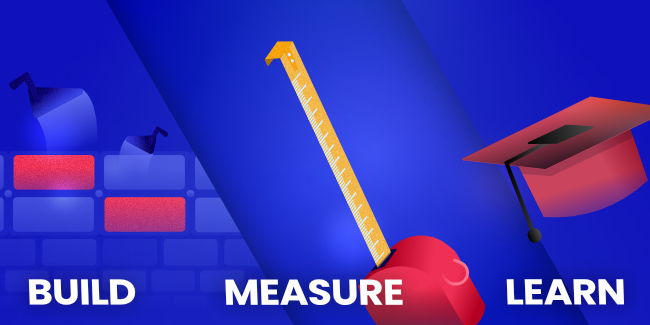
The whole goal of Minimum Viable Product is to create a minimum feature set of a product with as little time and money investment as possible that will give us as much validated learning about users as possible.
This initial feedback will be precious because it will show your team what the user pain points and needs are and will verify the fundamental assumptions of the project.
Working on the MVP is a continuous loop because we have to make multiple changes and iterations based on the collected user data.
Until we produce a positively received product by most users and are ready for market release.
MVP - Software Development
The Minimum Viable Product is crucial in the new software development process. It's your top selection for validating software project benefits and lowering product development expenses.
Why do you need an MVP?
Fit in the market
Building an application is one thing, but adopting it by users is a whole other story. As shown by data from CB Insights, 35% of startups fail because there is no market need for their product.
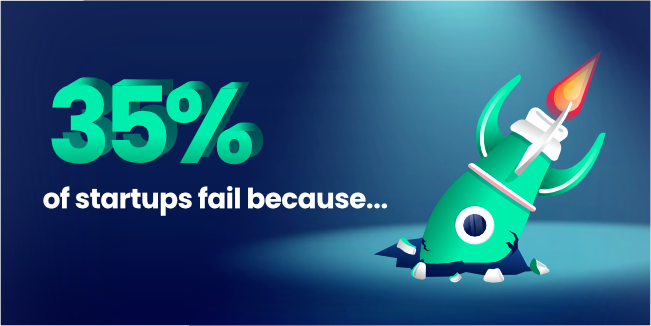
To avoid this situation, you need to be sure that someone will use your application before releasing it to the market.
The MVP development lets you check whether your application reaches the target group and anyone needs it. All this with the smallest effort and small investment of money.
It is much better to collect feedback (even painful) when the application is just being developed than when you spent the marketing budget and fine-tuned the application.
Protect your budget
Yeeees... the budget. The most common reason for startup failure (38%!) is the lack of funds for further development.
Suppose you decide to start building a Minimum Viable Product, an iterative process. In that case, you'll verify all your steps with a small financial investment. It is much better than creating a vast software engineering branch before finding the meaning and value of your idea.
Creating an MVP saves time and money by validating every step and building something that you can show to investors!
MVP = Higher funding chances
Interestingly, the DocSend report shows that VCs no longer accept showing the idea itself as an MVP.
It means that e.g., Dropbox with its original MVP (video clip) probably wouldn't secure funding these days and would have to build an alpha or beta of the product first.
Only 11% of companies nowadays receive funding without a ready-made product prototype.
How to do it?
So, you already know what an MVP is and why you should invest in it. The only question that remains is how to do it the right way?
The steps below should help you build your very own Minimum Viable Product!
Process of MVP Development
The first step is to develop the MVP itself. We at mDevelopers use an Agile MVP development framework. Below are the steps on how we do it and how you should do it. If you'd like to start turning your idea into an MVP yourself, it's a good idea to download our , which is designed to help you list all the most important aspects of your application.

Think about your idea
Defining your product or startup idea would be best to define the MVP development process. This point looks pretty trivial, but if you start developing and want to check your business hypothesis, you have to start from scratch. Therefore, the first thing you should consider is the fundamental assumptions of your project.
What are you solving?
First of all, you need to know what problem / need your application will solve.
If you specify this point, you will be able to define your target group and check if there is a gap your solution is going to fill. I will talk about the target group more later on.
Competition
One of the first steps is to determine if there is competition in the market. Suppose there is no similar application on the market. In that case, there are two options - either your idea is pioneering, and people do not know yet that they need it, or similar applications have all failed.
It is worth researching this topic because you can learn a lot from the mistakes of others. However, if there is competition on the market, you should start to wonder how your application will differ from it.
If your competition is firmly embedded in the market, it may be worth changing the assumptions of your application.
Initial market research brought positive results? It's time to set goals!
Business objectives
The most important thing is establishing a business model canvas and goals to meet in the long term.
Is this goal to increase revenue? Attract more customers? Get financing?
It is worth establishing it to know what you are aiming for at the very beginning.
When it comes to the business model canvas in the case of building an MVP, it is worth answering several issues from this model, such as value propositions, customer segments, and key activities of your product idea.
Success criteria
If you create an MVP, you will have to measure somehow whether it meets the pre-set goals. Simply said, now it's time to define success.
Metrics you can measure include, for example, retention rate, time spent in your app, user activity, etc. If you want to know more, read our article "6 ways to boost your mobile app engagement & user retention", in which we describe these types of metrics.
Identify user persona
The user is the aspect on which the real MVP is based. You create your mobile app or web app for your early adopters. You and your development team will build future iterations based on their feedback.
Identifying your application's target audience is crucial, precisely the user persona.
Who is the application intended for?

In the first step, you have determined what problem / need your application will solve. Now you need to understand who would benefit from such a solution.
Suppose your application is used, for example, to recognize insects through a photo. In that case, your target persona will be people interested in nature.
However, this is just the beginning of identifying a target person. Now you have to answer questions that will make it more precise. Below are some examples.
How does he/she do [a certain task]?
How long does this task typically take?
What traditional (analog) tools does he/she use to accomplish tasks?
The answers to such questions define the target persona and allow us to see our value proposition.
Value proposition
Suppose checking an insect in an encyclopedia or searching for it on the Internet takes 5 minutes, and our application does it in a few seconds. In that case, the user will surely go with it.
When determining the value proposition, you need to consider why the user should be interested in the application. What will the application give him? In a word, why a user should become a user.
Focus on target user
You just defined your real target users. Great! Now is the time to consider how this prototype user will navigate through your Minimum Viable Product and what will drive him.
In a word, it's design time!

We at mDevelopers use several techniques for this.
User flow
User flow is the path a prototypical user takes on your website or app to complete a task.
The user must start at the entry point, go through all the steps towards success, and finally click that final button.
Designing these flows should be one of the top priorities for ensuring users can achieve what they need without hiccups!
This solution comes from the UX family and is responsible for user satisfaction in the application. After all, no one likes non-transparent and unintuitive solutions.
To design a user flow, you need to know how your MVP app structure will look and what it should offer users.
It's best to list all the features first and then think about the user's path to achieving a given goal, such as ordering a product or registering. Additionally, you can design a product. roadmap, which will be helpful in terms of developing your Minimum Viable Product. Read more about it in our article "What is a Product Roadmap?".

User stories
When creating user stories, we must put ourselves in the position of the end-user of our application. How we describe user stories should be simple and accessible so that each team member will understand it.
Thanks to user stories, you will know what functionalities should be added to your application to satisfy the previously defined target persona.
This solution is divided into three parts, creating the user's story.
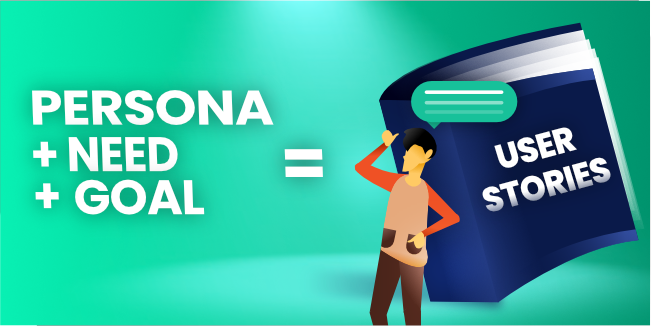
The user of your application is the "persona," the "need" speaks for itself, and the "goal" is something that the user wants to achieve through our application.
So, let's say you have a service appointment booking app and want to create a user story. It should look like that :
As a {student}, I want {to research barbers in my area} so that I {can find the cheapest one}.
Even a simple example shows us that the application needs to have a price filter.
It is why user stories help verify current features and to invent new ones.
Of course, you need to create a lot more stories of this type, so it's an excellent task for the entire team to brainstorm!
Pain and gain map
If you have designed your user journey by creating user flows and stories, now is the time to make a pain and gain map.
It writes out the pains and gains of the user who has a specified "need." Following the example with a student, the pain and gain map would look like this:
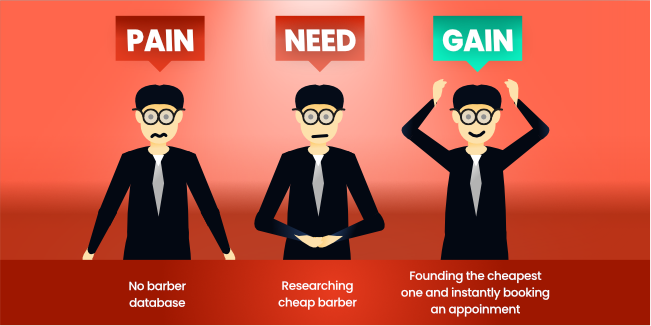
When creating this map, we locate the user's pain points and immediately present what benefit he will receive if the problem is solved.
We can segregate which aspects of our application are worth investing in the most and only distant dreams.
After all, we must remember that we are building a minimal version of our product!
Prioritize functionalities
We determined our application's features and functionalities in the previous steps.
The more, the better, right?
Well, not really. As we have already mentioned, the purpose of building an MVP is its validation with the least effort. Therefore, it's time to sort your application's core functionalities and core features.
You have to consider what is a "must-have" for the user and what is just nice addition and categorize the elements of your application into high, medium, and low priority.

The elements from the last two categories are likely to be included in the product roadmap as things to be implemented later or in future iterations.
Functionality prioritization can only be done well when you know what your user looks like and wants. However, you have to be careful not to overdo it in either direction.
If there are too many functions, the UX and UI layer will be disturbed, and the user will get lost. If there are not enough functions, it will be hard to check if the application is working and achieving its goals.
In a word, it's worth writing out all the functionalities and features in one place.
When you have such a document, you can take a bird's eye view of the structure of your app, and prioritization comes in quickly!
Pick needed tech stack
After the concept and design stages, it's finally time to start thinking about the actual product!
For this purpose, you need to consider what technology your application will be built on and what technological solutions it will use.
Thinking through the technical issues before starting development will allow you to iterate faster and have fewer bottlenecks throughout the project.
The features identified in the previous step can be a great guide to choosing a technology. The goals set at the very beginning will determine what the system load will be and how this number will increase with time.
Another critical issue in this step is determining which stores the application will be available. Should it be listed on the app store, google play, or maybe both?
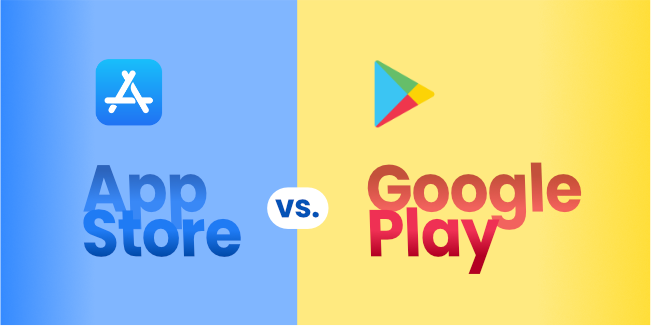
Each store has its regulations and requirements, so you should read them before starting construction. During this step, you will also have to choose whether your app is to be a cross-platform or a native one.
Develop MVP
The market needs are fixed, business or customer needs are discussed, core features set, technology selected, and now it's time to start development! When creating the first version of your MVP, you must never forget to find the balance between simplicity, economy, and meeting the expectations and needs of the user.
Another thing you can't forget is that your minimal product should be viable! If you have previously specified a function that is not feasible at this stage, try to rebuild it or enter it as "to be added in future iterations."
Test and iterate it!

Okay, so you've released your MVP. You are controlling the achievements of your application and continuous iterations. Now it's the moment that we at mDevelopers like the most.
Of course, both of these activities should be supported by user feedback that we collect from users.
This user feedback will tell us which functionalities to improve, which to remove, and what else to add to the application.
This stage will probably take the longest because now you have to test, test and test again. Then iterate over the test data until the final product is produced.
It should also be noted that after the final MVP release, successful apps have two options.
Either they convert the MVP to the final product and release it to the market, or they scrap the MVP and build a new application from scratch that relies on the intel collected during the MVP production.
However, it all depends on the nature of both the MVP itself and the project.
So, after the MVP exhibits a major increase in performance and meets the test criteria, what are you going to do? Here comes the MMP.
The MMP (Minimum Marketable Product) is a product that has fewer features or is still in the development stage but is already suitable for sales and marketing. But this is a topic for another article.
Summing up
Building an MVP is an excellent idea if you want to ensure that your product will hit the market and find its audience.
We hope the above guide will help you understand the idea behind the MVP and its production process. We invite you to the Discovery Workshops, where you will learn how to create a product with a guaranteed, stable position at the moment of entering the market.
At mDevelopers, we have extensive experience in mobile application development projects, web application development projects, and working with startups, so we know exactly how to build a successful MVP. If you want to discuss your project, arrange a free consultation with our specialists. We have been creating successful projects for many years and love sharing our knowledge and experience.

This article is part of our Discovery Workshop series
What is Product Design? What is the Product Discovery and Product Discovery Process? Tips and Techniques for Effective Product Discovery Process Idea Validation in Practice Product Roadmap - how to write user stories and user flows? How to choose a tech stack for your project? How to create a project timeline? How to create a project budget? Functional Requirements Document for your Product What is a Prototype? Now readingBuild your MVP (Minimum Viable Product) the right way - step by step guide by mDevelopers